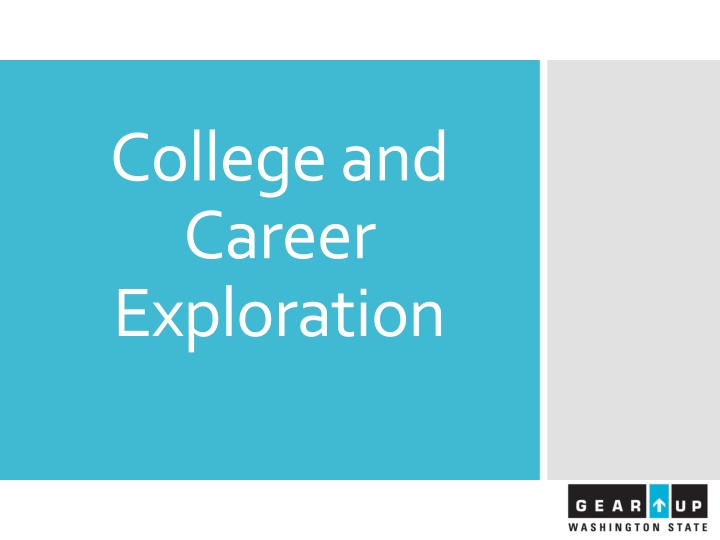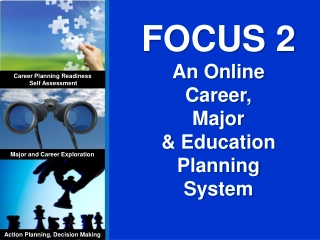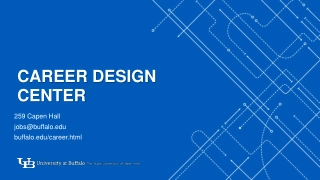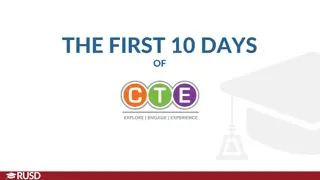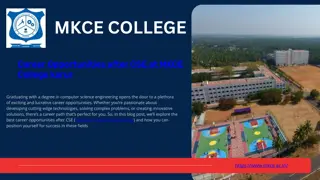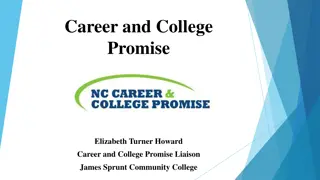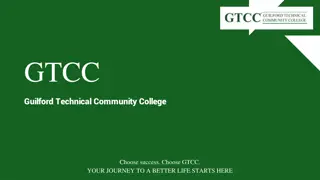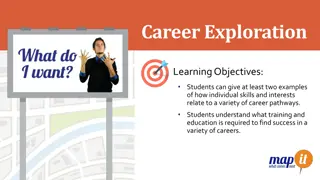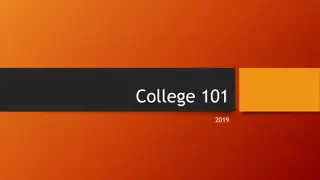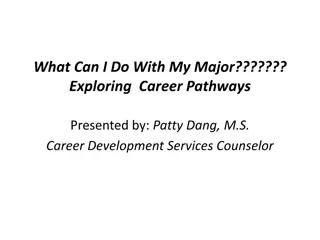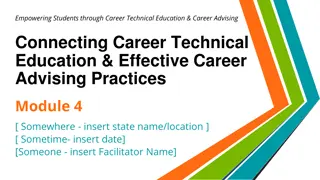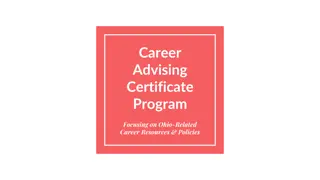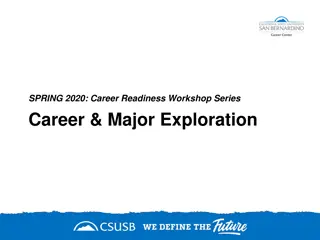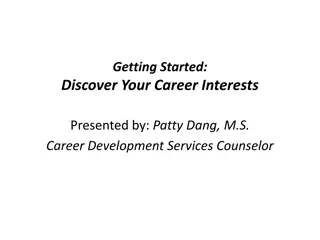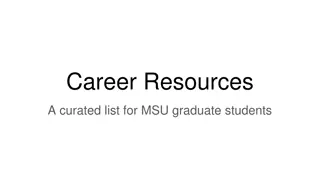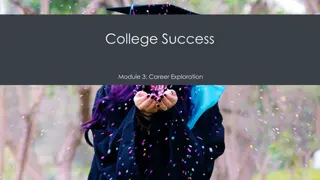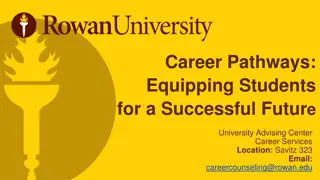College and Career Exploration
Students have various options for their future after high school, including attending college for a Bachelor's Degree, pursuing career certificates at community or technical college, joining apprenticeship programs through Career and Technical Education, or exploring military opportunities. Each pathway offers unique experiences and training to prepare individuals for their desired careers.
Download Presentation

Please find below an Image/Link to download the presentation.
The content on the website is provided AS IS for your information and personal use only. It may not be sold, licensed, or shared on other websites without obtaining consent from the author.If you encounter any issues during the download, it is possible that the publisher has removed the file from their server.
You are allowed to download the files provided on this website for personal or commercial use, subject to the condition that they are used lawfully. All files are the property of their respective owners.
The content on the website is provided AS IS for your information and personal use only. It may not be sold, licensed, or shared on other websites without obtaining consent from the author.
E N D
Presentation Transcript
College and Career Exploration
Introductions Our GEAR UP Team includes:
oWhen we say college, we mean any type of education or training after high school. We also use the terms postsecondary education and postsecondary training . oThere are many options for students after high school, including apprenticeships, military, on-the-job training programs, community college certificates, two-year degrees, and four-year degrees. oThe term college includes all of these things. Each of these paths has entrance requirements. These requirements vary by institution. What do we mean when we say college?
Students who need more education usually attend a four year-college or university. The first degree you earn will be a Bachelor s Degree, such as a Bachelor of Science degree. You might continue on to graduate or professional school or you might use your degree to go right into the workplace. You can earn a Bachelor s degree in nearly any subject imaginable, from Asian Studies to Zoology. Four-year college or university
Many students go to community or technical college to earn a career certificate or to get an Associate Degree. You can enter the workplace with an Associate Degree or use it to transfer into a four-year university and continue on toward earning a degree. Two-year college careers include Cosmetology, Computer-aided Drafting and Design, Medical Office Clerk, or Culinary Arts. Two-year college
Do you want to earn a paycheck while you learn a job? Certificate or apprenticesh ip programs- Career And Technical Education (CTE) Would you like to work one-on-one with someone who s experienced? In CTE training (apprenticeship), you learn a highly skilled job (in manufacturing or high tech, or health care, public safety, cooking, or construction) by working with a skilled expert. An apprenticeship usually lasts two to four years. CTE careers include Auto Technicians, Carpenters, Electricians, and Hairstylists.
Some students join the military after high school. You can join the military right away, or you can join the Reserve Officers Training Corps (ROTC) while you are in college and then be commissioned as an officer after college graduation. Military The military offers many different career and training opportunities, meaning that you ll need to decide what you want to do before you join. Most careers can be pursued through the military.
AmeriCorps is a national service program. AmeriCorps is a real-life education and work experience wrapped into one. As an AmeriCorps member, you volunteer to help make the world a better place: help children learn, protect the environment, or bring needed services to a low-income community. Most AmeriCorps members receive student loan deferment, and training, and may receive a living allowance and limited health benefit options. After you complete your term of service, you will also receive a Segal AmeriCorps Education Award to help pay for college, graduate school, or vocational training or to repay student loans. Learn more: www.americorps.gov/for_individuals/benefits AmeriCorps
Some students elect to enter the workplace directly after high school graduation. Many plan to return to some form of postsecondary education after a year or two of earning a wage. Others do not return and hope to develop desirable skills through experience. Every student will eventually enter the workplace, so all need to develop qualifications, learn job search techniques, write an effective resume, develop interview skills, and understand how to grow within an organization. Workplace
Certificate Technical diploma Associate s Bachelor's Doctorate Professional Degree Types of degrees
Some jobs of tomorrow have not even been invented yet! Students do not have to know exactly what career path or major they would like to pursue. The first step is best to identify their interests and skills. Learn what possible careers are in that field and the education they require. Think about careers
Career and interest search. Find colleges. Pay for school. Undocumented student resources. Applying to college. https://bigfuture.collegeboard.org/ College Board s Big Future
CheckOutA College.com
Where are you going? www.wtb.wa.gov/WhereAreYouGoing- CareerGuide.asp Career Interest Guide
Career Interest Inventory www.careerbridge.wa.gov
Talk to admissions representatives. Ask about what majors they offer. Ask about their admission requirements. Find out what life is like on campus or how they support students who commute. College fairs
Campus visits provide meaningful opportunities for students and families explore options. Activities might include: Campus tours led by students. Student panels. Hands-on activities related to class curriculum. Admissions/financial aid presentation. Visiting dorms or athletic facilities. Sitting in on a class. Time to talk to an instructor. Learning about support services. Campus visits
Contact information: [insert counselor/advisor/mentor name] Phone: (xxx) xxx-xxxx E-mail: xxxx@xxxx.xxx Thanks for coming
Topic Next Family Night Date
